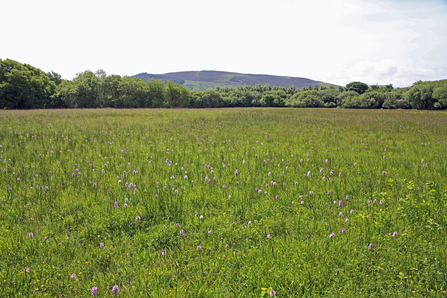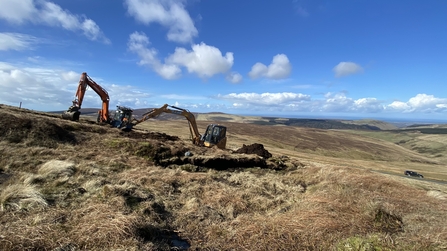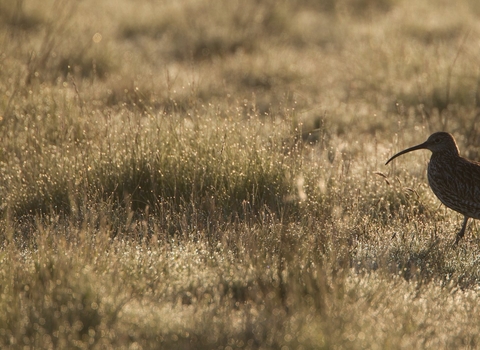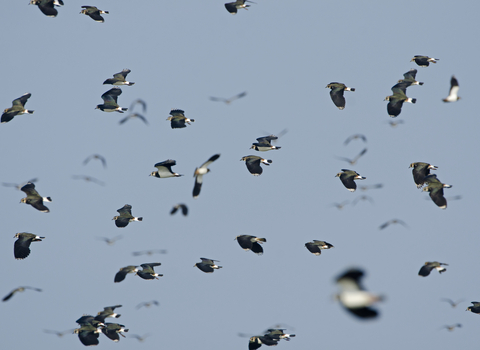Manx Wildlife Trust have partnered with the Isle of Man Government to deliver the new Isle of Man Agri-Environment Scheme; a landscape-scale system of farming support across the Crown Dependency. Over the last 50 years the Manx Wildlife Trust has acquired 25 nature reserves, however these cover just 0.24% of the Island. Furthermore, legally protected Areas of Special Scientific Interest cover just 4.14% of the country. By contrast, agriculture covers 88% of the land area of the Isle of Man. In order to facilitate nature’s recovery, we need to work closely with farmers to make more spaces for nature across the landscape; not just on reserves, but across farmland too, including our lowland arable and grassland farms and the extensive upland pastures and grazed moors.

Nature-friendly farming: Traditional late-cut, winter-grazed hay meadow in the north of the Isle of Man, home to thousands of protected orchids. ©Graham Makepeace-Warne, Manx Wildlife Trust.
Manx agriculture is already recognised for its invaluable contribution to the island’s wildlife and stunning landscape. Being an independent island nation and having never been part of the EU’s Common Agricultural Policy, farming techniques and financial support on the Isle of Man are markedly different to those found in the UK. For example, the island boasts smaller farms and fields with over 5,000km of hedgerows (around 8.74km per km2) surrounding some 20,000 fields, which have an average size of just 2ha (compared to around 10ha in England).
Amongst the resulting patchwork of varied habitats can be found many iconic farmland species, including: 400 pairs of breeding curlew in wet, rough grazing areas; an incredible 30 pairs of hen harrier on the uplands; and 130 pairs of chough (28% of the combined UK and IOM total) which forage on extensive coastal pastures. The new Agri-Environment Scheme recognises and rewards the role Manx farmers will have in nature’s recovery by further protecting and enhancing farmland habitats and promoting nature-friendly farming techniques.
The new scheme builds upon an earlier small-scale pilot scheme which was limited to just 30 farms (less than 10% of the total) and is the first landscape-scale conservation scheme in Manx history. It is a voluntary scheme, with an initial annual budget of £1,000,000 open to all 341 active farmers. The Scheme has 38 recognised initiatives that benefit the environment, including planting trees, creating new hedgerows and traditional Manx sod hedgebanks, creating and restoring wetlands and protecting watercourses and soils. Grants are also available for educational visits on farms, wildlife boxes and nature-friendly arable practices such as winter stubbles and traditional spring cropping.

Working together: degraded peat on public uplands being restored by the tenant grazing farmers to enhance biodiversity, sequester carbon and reduce flooding. ©Shaun Gelling, Isle of Man Government.
Everyone wants an Island richer in nature, where financially and environmentally sustainable farms produce healthy, low-input, high-welfare, low-mileage food amongst a stunning landscape. From 2021, many individual small projects will therefore receive public financial support, such as restoring a silted-up farmland pond, creating a new late-cut hay meadow or re-introducing cattle grazing to an overgrown and neglected rush pasture where lapwing once bred. By working together with Manx farmers right across the island, many small initiatives will make a major difference to the fortunes of our farmland wildlife and restore a countryside richer in wildlife for all to enjoy.






